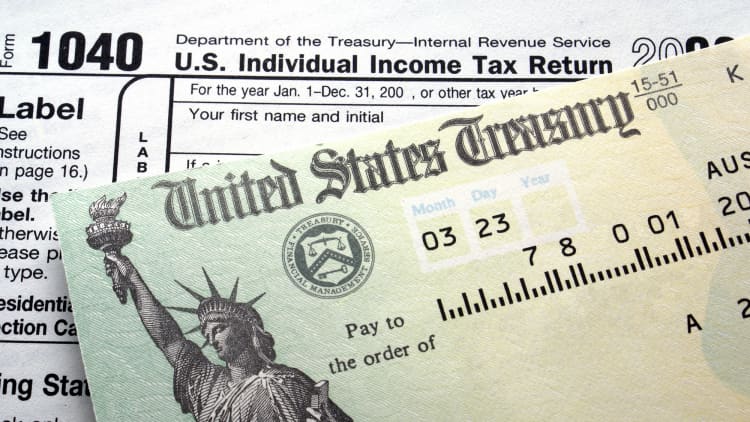Contributing too much to your 401(k) seems like a nice problem to have — yet it can also be an expensive one if you don't fix the error before mid-April.
Under IRS rules for 2017, employees have a cap of $18,000 on their own contributions ($24,000 if you're age 50 or older), not counting any employer contributions. (The caps are unchanged from 2016.)
Go over the limit, and you'll have to take back the excess by April 15. Otherwise, that cash could effectively be taxed twice.
It's not a problem many workers face. Even brushing up against the limit isn't common, said Meghan Murphy, director of thought leadership at Fidelity.
Just 12 percent of employees set aside enough to hit the employee contribution limit during 2015, up from 11 percent who did the year before, according to Vanguard's "How America Saves 2016" report. (See a demographic breakdown in the chart below.) Fidelity estimates 8.5 percent of workers max out their workplace account.
More from Your Money Your Future:
Five ways to bulletproof your estate plan
Take this secret to the grave, and it'll cost you
4 great ways to head off a financial shock
Actually going over would require a set of more unusual circumstances, said certified financial planner Mark LaSpisa, president of Vermillion Financial Advisors in South Barrington, Illinois.
"Most payroll services have built into their software the annual limits," he said — you can expect to be cut off automatically. Retirement plan administrators are also monitoring those limits to prevent excess deferrals.
Where an over-limit 401(k) plan contribution might initially squeak by, he said, is if you switch full-time jobs at some point in the year or are simultaneously juggling two or more jobs where you're eligible to contribute to a workplace plan.
You have to get the money out before filing.Tim GagnonNortheastern University's D'Amore-McKim School of Business
"Both of their payroll services will cap you out at $18,000, but don't take into account what you contributed through the other job," he said. "It's on you to communicate what dollar figure you already put in [elsewhere]."
(In comparison, it's easier to erroneously contribute too much to a Roth IRA, based on poor income tracking or an unexpected uptick in your income.)
If you do somehow manage to save too much, it's unlikely the error will go unnoticed for long. Plan administrators typically do a records check at the beginning of the new tax year, quickly distributing any excess contributions back to the employee along with a tax record of the event, Murphy said.
Your accountant is likely to spot and flag over-contributions across multiple jobs and accounts when preparing the year's return, LaSpisa said. If that's the case, you'll need to reach out to one of your employers to pull back the excess, which can usually be easily accomplished.

Potential consequences depend on whether you withdraw the excess cash, and any earnings on those funds, before the April 15 deadline.
"You have to get the money out before filing," said Tim Gagnon, an associate teaching professor of accounting at Northeastern University's D'Amore-McKim School of Business.
Do so, and you'll owe taxes for 2016 on any portion of the contribution that was made on a pre-tax basis, Murphy said. (You'll receive an amended W-2 to reflect the returned amount as wages, or a 1099-R from the retirement plan administrator.) Any earnings will be taxed in the year they were withdrawn — so, 2017, if you're just spotting this issue.
Fail to withdraw the money, and the excess contribution will still be taxable as income for 2016. But the IRS says it won't factor into your cost basis — meaning it will be taxed again as income when it's eventually withdrawn or returned to you, even if that's later this year.






